As you can see from the photo below it is really mucky and the water doesn’t drain well so we have to amend the soil heavily or build raised beds. Due to the clay not draining very well, even when amended, we usually opt for raised beds of some sort.
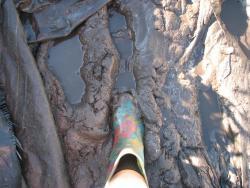
You can use anything to make raised beds. We have some made from rocks in the display areas and then for the seedling beds and hybridizing beds we use 2x10s. If the area has a lot of tree roots we will put down a ground cover under the beds so the daylily roots don’t try and grow down into the tree roots; it makes for tougher digging come dividing time.
First we fill the beds with pine bark, usually the dime to nickel size pieces. We have a dump truck or semi-truck load of the pine bark delivered.
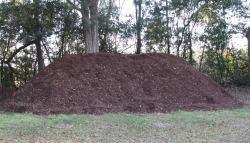
We will add 10% sand to this and till it all together. This helps the pine bark not stick together and it will drain better when watered; we do this in either type of bed we make.

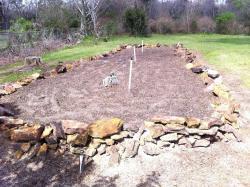
I will do things a little different each time I redo a bed or make a new one. But the basics are still the same.
Once the sand and pine bark is tilled together we will till in chicken/poultry litter, which is already dried and processed, and alfalfa pellets (horse feed). If the soil ph in the beds is low we will add pelletized lime to help raise it. You can have your soil tested at any agricultural extension office or you can use the do-it-yourself kits or probes. The professional soil test is more accurate, but the at home kind is close enough; daylilies like a ph of around 6.5. I have used rabbit manure as well, but it’s hard to get around here.
The alfalfa pellets and chicken litter help amend the planting media, feed the daylilies, and feed the worms. To me the latter is most important. If you keep the worms well fed and happy they will in turn leave behind their castings that will feed and make the daylilies happy.

Once everything is all tilled together you are ready to plant your daylilies.
Even though everything has been added to the beds already, when we plant the daylilies we will add more of the same to the planting hole. Not everyone will need to add the same thing when they plant their daylilies; it depends on what your soil needs. Some people add a balance fertilizer such as 10-10-10 while here in the south we usually add a 3-1-2 ratio such as 18-6-12 with minors or something close. We need a lower middle number (phosphorus) here because we can get a buildup of it in our soil.
Once the hole is dug we will add more alfalfa pellets (a handful will do), chicken litter, slow release fertilizer, and sometimes I use Milorganite in the hole and other times I just top dress with it. If I have it on hand I will throw a pinch of Epsom salt and/or Ironite into the hole also, this gives the daylilies some needed nutrients and also helps to green them up quicker.

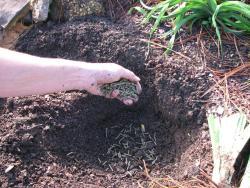

Just add everything and rake it in with the soil a little bit and plant your daylily. I will go back and top dress the beds with more of the same except the Epsom salt and Ironite. About every 3-4 months I will go back and top dress the beds with more alfalfa pellets so the worms will have some fresh food.
Some may think this is over kill on fertilizing, but we have been told that with our heat, humidity, and rain it is really hard to over fertilize here so we don’t worry too much about this. The daylilies tell us when they’ve had too much.
We also use water soluble fertilizers and lawn fertilizer. The lawn fertilizer is a quick release 30 day formula that gives the daylilies a quick feeding until the slow release starts working. The slow release only starts doing its job once temperatures go above 70 degrees so in early spring when temps are still dipping down the daylilies will get nutrients. We use an 8-8-8 or 15-0-15 depending on what we feel the daylilies need.
We use a couple of different things for water soluble fertilizers. One is Miracle-Gro all-purpose plant food with the ratio of 24-8-16, the other is Daniels Plant Food. We have actually been alternating the two. The Daniels is less chemical based and it feeds the soil microbes as well; the daylilies seem to LOVE it. We feed with these about once a week and will continue to do so throughout the year since our growing season is year round.
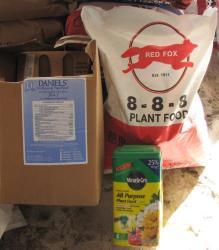
Most of these products can be found at your local feed and seed stores or farm supply stores. If you have a BWI distributor near you this is where to buy the 50 lb. bags of slow release and bigger containers of Daniels at a more reasonable price.
The most important thing your daylilies need though is deep watering. As Dan Trimmer said “WATER, WATER, WATER” and your daylilies will go from this
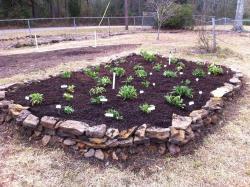
To this in no time
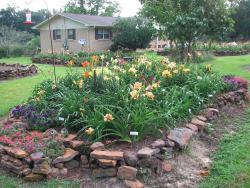
Happy planting.
| Thread Title | Last Reply | Replies |
|---|---|---|
| Lots of great information. by mistyfog | Sep 2, 2014 12:02 PM | 21 |